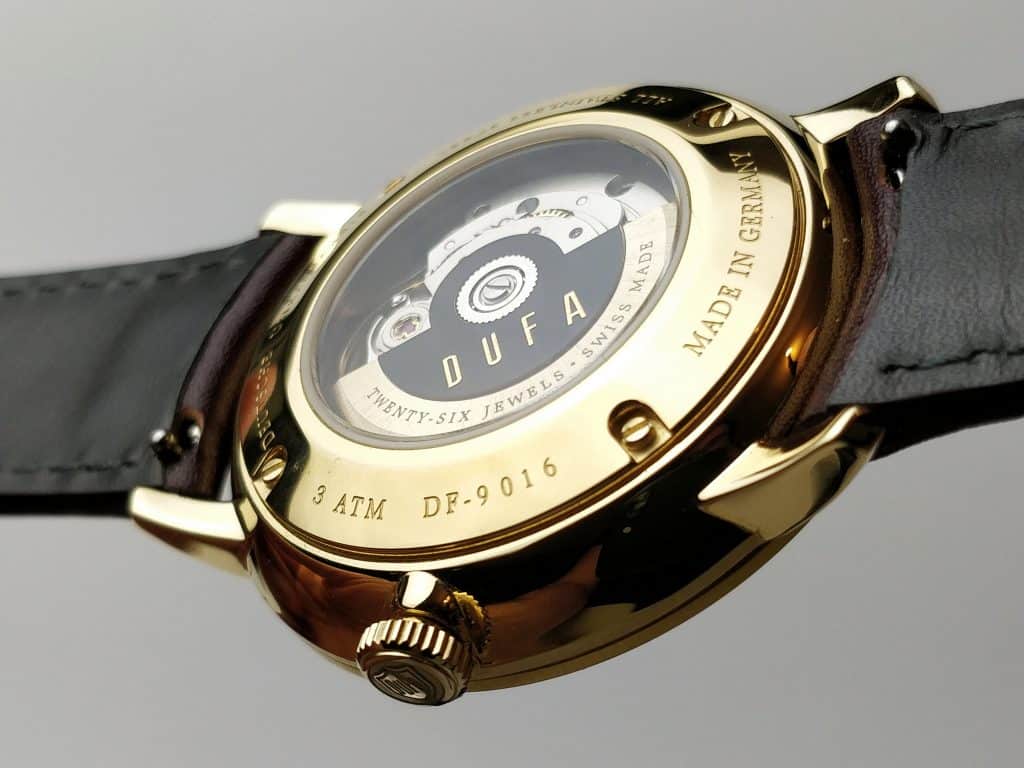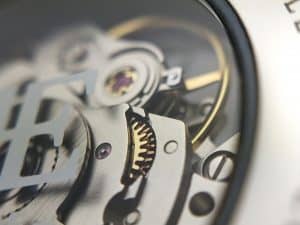As an enthusiast then you need to know the Types of Watch Movements Quartz Movement vs Automatic and how they are different in 2024.
The watch’s movement, or what is also known as ‘calibre’, is the mechanism that runs the hands of a wristwatch.
It’s the engine responsible for making the hands, subdials, calendars, and other complications tick.
This is a watch caliber guide to help you understand more about these mechanisms and the differences in detail.
Many watchmakers source their movements from other companies that specialize in making them.
Outsourcing this component allows them to sell their products on more affordable price ranges.
On the other hand, luxury brands and some mid-range watchmakers who make their own movements sell their products at a higher price because of the complex process involved in developing their own movements.
Watch Movements
Although there’s an endless number to the different calibres timepieces may have, all of them can be categorized under the 3 types of watch movements: quartz, mechanical, and automatic.
Quartz movement
It was around 1970 when Japanese watchmakers started introducing watches with quartz movement to the market.
By using integrated circuits which can be mass-produced, these watchmakers overran the market with inexpensive, uncomplicated, and maintenance-free timepieces.
Many traditional watch brands closed down, leading to the event known as the Quartz Crisis.
It took several years later before Swiss watchmakers started producing their own Swiss quartz movement.
In a quartz watch, the battery sends power to a quartz crystal and makes it vibrate.
The vibrations keep the watch movement oscillating, driving the motor to continuously move the hands of the watch.
Watches with quartz movement require minimal maintenance since you only have to replace the batteries that power the engine.
Since they’re battery-powered, they have fewer moving parts, thus having the advantage of being lower-priced than mechanical timepieces.
Quartz watches are inherently more precise when compared to mechanical watches.
However, most casual watches using quartz movement have no complications like subdials and perpetual calendars in them.
Mechanical movement
 Watches with mechanical movements are more expensive because they have more moving parts and require a higher level of craftsmanship to assemble the complex mechanisms.
Watches with mechanical movements are more expensive because they have more moving parts and require a higher level of craftsmanship to assemble the complex mechanisms.
Instead of relying on a stored power source like a battery, these watches obtain energy from the series of intertwined pieces that wound a minuscule spring stored inside the watch.
This wound spring powers the watch and makes the hands move.
The energy it creates is controlled with the help of a series of springs, pinions, and gears.
The mechanical movement is the traditional engineering used in wristwatches.
They’re also called hand-wound movements because you have to manually ‘recharge’ the mainspring to store energy which the watch can draw later on for reserved power.
Usually, the crown of these watches needs to be turned several times in a certain direction to rewind the spring.
Typically, the power reserve capacity of manual movement watches range from 24 hours to 5 days, depending on the engineering installed by the manufacturer.
Panerai Luminor models even have up to 8 days of reserved power capacity.
If you have a hand-wound watch, it’s best to make it a habit to turn the crown of the watch to rewind the spring before you wear it.
The process for creating mechanical watches haven’t changed that much.
However, advancements in technology have allowed watchmakers to incorporate better precision, larger power reserves, intricate designs, and more complex features inside mechanical watches.
Automatic movement
Watches with an automatic movement are also called ‘self-winding’ because you don’t have to manually turn the crown to rewind the spring mechanism.
A self-winding rotor freely oscillates as you swing your arms, rewinding the spring without any manual interference.
Automatic watches require less maintenance as long as you wear them every day.
If you think you won’t be wearing your watch for a day or two, it’d be best to put them on a watch winder.
This accessory can help keep your watch fully wound and ready to be used again.

Quartz movement vs. Automatic vs. Mechanical
In terms of accuracy, quartz watches win in a quartz movement vs.
automatic battle; even mechanical watches don’t hold a candle to quartz timepieces.
In terms of operational lifespan, quartz watches can run at least 2 years before you need to replace their affordable batteries.
On the other hand, mechanical and automatic watches should be kept winded to keep them running.
Now, if you want watches with complications like chronograph subdials, perpetual calendars, GMT movements, moonphase functions, anti-magnetic properties, and high water resistance ratings, you should go for either mechanical or automatic watches.
The complex mechanisms installed on these watches make all these features possible.
Watch collectors and aficionados often prefer the more expensive mechanical and automatic timepieces because these represent the complex engineering that evolved from the 600-year history of horological refinement and craftsmanship.
But if you’re a casual watch user, a timepiece with a quartz movement might be more practical for daily use.
You might be wondering about the differences between Japanese and Swiss quartz movements.
The truth is, they don’t differ much.
Perhaps the biggest difference between them is the country where the movements are made.
Conclusion
You don’t have to be confused when looking at the calibres of watches as there are only 3 types of watch movements you have to remember.
If you want to know more about the specific movement variation watches brands use on their products, seek out a watch caliber guide to get more details on them.
In comparing quartz movement vs.
automatic vs.
mechanical watches, it’s best to know your purpose for purchasing a watch.
Each has its own benefits and disadvantages, so it’s up to your taste, budget, and objective in choosing which type of watch movement will work best for you.
Additional Sources:
- Best Luxury Automatic Mens Watches Under $500 – Top List of 2024
- Best Automatic Dive Watches Under $500 – Updated 2024
- Manual Wound Vs Self Wound Automatic Watches – Guide 2024
- Top 8 Affordable Automatic Watches – Updated Guide 2024
- How Automatic Watches Work – The Layman’s Explanation
- DWISS R1 Quartz Watch Review
- 15 Best Luminous Watches – Types of Lume


